(The figures in brackets
after each name give the population in 1911, and those at the end of
each section are references to pages in the text.)
Auchinblae, a picturesquely situated village 2 miles north of Fordoun
Station, is a famous summer resort. Here is the entrance to the
beautiful Glen of Drumtochty. (p. 56.)
Banchory (1633), in the parish of Banchory-Ternan, was founded in 1805
and is now a Police Burgh. The most popular of resorts on Lower Deeside,
it is pleasantly situated on the north bank of the Dee, 18 miles west of
Aberdeen.
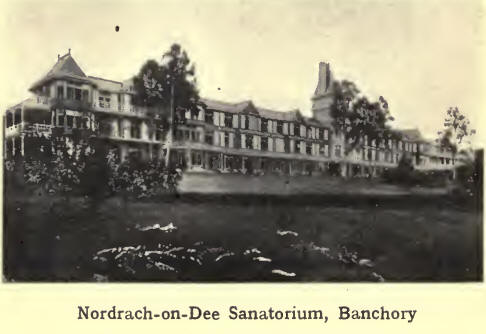
The picturesque Falls of
Feugh are less than a mile from the town. The Nordrach-on-Dee Sanatorium
stands in pine woods a little to the west. The Hill of Fare, to the
north, was the scene of the battle of Corrichie. (pp. 5, 7, 10, 14, 22,
47, 55, 72, 74, 99.)
Bervie (1173), formerly and still officially Inverbervie,”a royal burgh
since 1362, has prosperous flax-spinning mills.
Salmon - fishing is successfully carried on. David II. landed here in
1341, after his exile in France, (pp. 5, 7, 12, 18, 55, 57, 74, 99, 100,
103.)
Catterline is a fishing hamlet in Kinneff parish, midway between
Stonehaven and Bervie. Todhead lighthouse is near. (pp. 40, 58.)
Cove, a fishing village about 4 miles south of Aberdeen, has also
fish-manure works, (pp. 36, 56, 58, 101.)
Cowie, a fishing hamlet 1 mile north of Stonehaven, (pp. 20, 23, 37, 58,
65, 76, 101.)
Drumlithie (207), an irregularly built village in Glenbervie parish. The
steeple, erected in 1777, is a circular tower surmounted by a belfry.
Drumlithie became a Burgh of Barony in 1329. (pp. 69, 100.)
Fettercairn, in the centre of a good agricultural district, is a Burgh
of Barony, 5 miles north of Laurencekirk. It has a Gothic arch erected
to commemorate the visit of
Queen Victoria and Prince Albert in 1861 ; and also a turreted fountain
tower, a memorial to Sir John Hepburn Stewart Forbes, Bart. (1804-1866).
The old market cross of Kincardine stands in the village, (pp. 13, 47,
48, 55, 56, 61, 72, 74. 83> 98.)
Findon, a village between Cove and Portlethen, the original home of the
well-known “Finnan haddock.” (p. 36.)
Fordoun, a village with station on the Caledonian Railway line. The
parish has historical associations with St Palla-Hdius, Lord Monboddo,
and James Beattie the poet; and contains the site of the old county
town, Kincardine. The chief village is Auchinblae. (pp. i, 13, 57, 61,
63, 70, 80, 98, 100, 108, no, in.)
Gourdon, a fishing village 1 mile south of Bervie, has a flax mill. (pp.
5, 40, 55, 58, 59.)
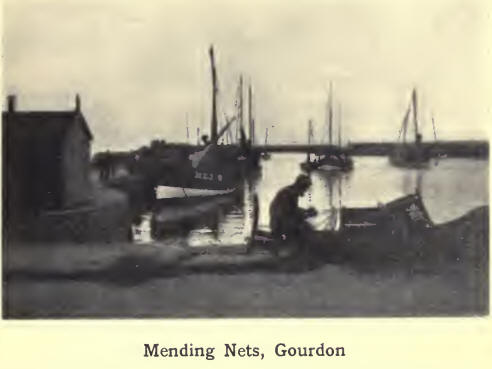
Johnshaven, a fishing
village and coastguard station in the parish of Benholm, has also a
spinning mill. (pp. 5, 40, 55, 58, 59, 94-)
Laurencekirk (1438), a Burgh of Barony, has a large local country trade,
a flourishing weekly mart, a brewery, coach works, and some handloom
weaving. The renowned Latinist, Thomas Ruddiman, was for a few years
schoolmaster here. (pp. n, 13, 52, 55, 56, 65, 98, 100, 107, no, in.)
Luthermuir, a small village in Marykirk, dating from 1771, had formerly
handloom weaving.
Marykirk, a village beautifully situated on the left bank of the North
Esk, a short mile from Craigo railway station, (pp. 13, 17, 72, 95, 96,
100, in.)
Muchalls, a neat little village and coastguard station 4 miles north of
Stonehaven, is famed for its rock scenery and is much frequented by
summer visitors, (pp. 13, 29, 30, 36, 69, 88.)
Portlethen, a small fishing village, 6 miles south of Aberdeen, (pp. 30,
36, 53, 58, 99.)
St Cyrus, a village with a salmon-fishing station in the S.E. corner of
the county, was formerly called Ecclesgreig. Both St Cyrus and
Ecclesgreig contain the name of a king of the Scots towards the close of
the ninth century, Grig or Girig, who won the title of “ Liberator of
the Scottish Church.” (pp. 12, 21, 24, 28, 40, 52, 57, 63, 83, 94, 99,
hi.)
Skateraw, a small fishing village, close to Newtonhill railway station,
(pp. 36, 58.)
Stonehaven (4266), stands on the bay some 14 miles S.S.W. of Aberdeen,
at the mouths of the Carron and the Cowie. In the beginning of the
seventeenth century it superseded Kincardine as the county town, and in
1889 was made a Police Burgh. It consists of an old and a new town. The
old town, south of the Carron, in Dunnottar parish, is irregularly
built, and inhabited mostly by fishermen. The new town, in Fetteresso
parish, lies between the two streams. It is regularly laid out and well
built. Prominent in the central square is the market house with its
lofty steeple, and in Allardyce Street the Italianate town hall. Other
notable buildings are the two parish churches and the other
churches—United Free, Episcopalian, and Roman Catholic. The Mackie
Academy was opened as a Secondary School in 1893. The fishing industry
is important; but for general trade the harbour admits only small
vessels. Of recent years Stonehaven has been much resorted to by summer
visitors, attracted, for health and pleasure, by its bracing climate,
fine cliffs and woods, sea-bathing and boating, golf course and
recreation ground, (pp. 5, 7, 19, 21, 22, 37, 44, 45, 47, 49, 55, 56,
58, 60, 61, 64, 65, 69, 73, 74» 93, 96, 98, 99, 100, 102, 103.)
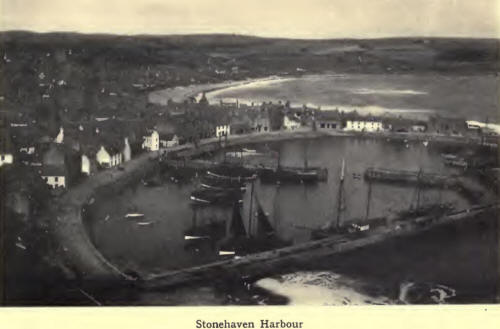
Strachan, or Kirkton of
Strachan, a village 4 miles from Banchory-Ternan, is in the largest and
hilliest parish. At the western boundary of the parish is Mount Battock,
the, converging point of three shires—Kincardine, Forfar, Aberdeen.
Famous natives were Rev. Andrew Cant and Dr Thomas Reid. (pp. 4, 72, 99,
no.)
Torry (11,428), which less than fifty years ago was a small fishing
village, is now an important ward of Aberdeen. It unites with the city
for parliamentary, municipal, and educational purposes. The construction
of the Victoria Bridge, to take the place of the ferry, and the
introduction of trawl-fishing led to the rapid growth of Torry. (p. 50.)
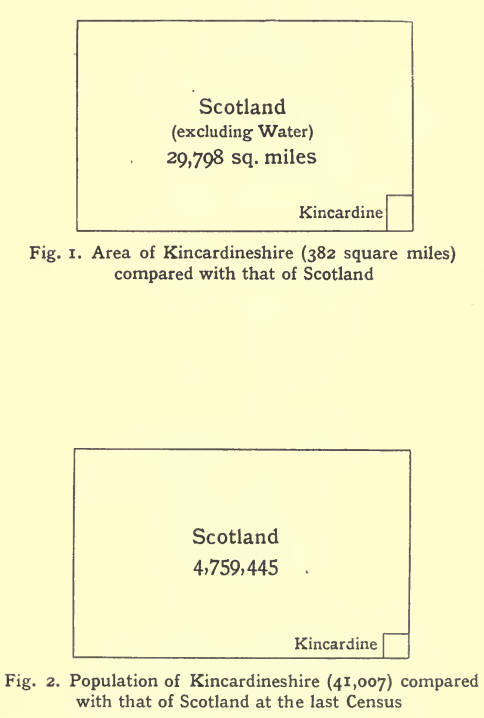
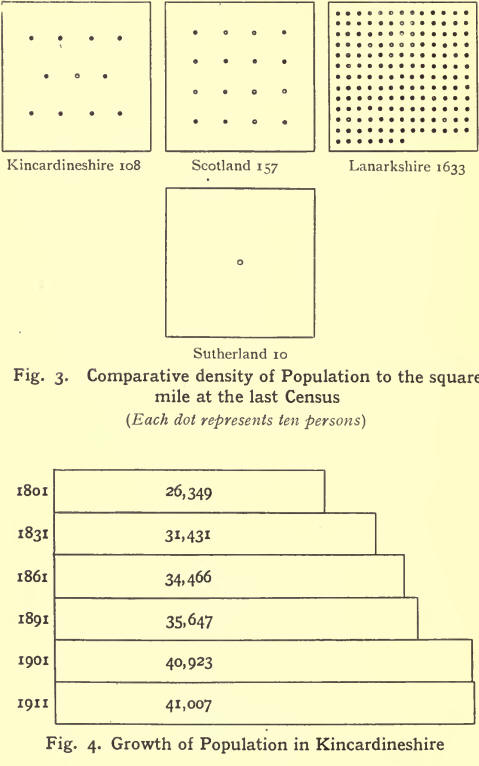
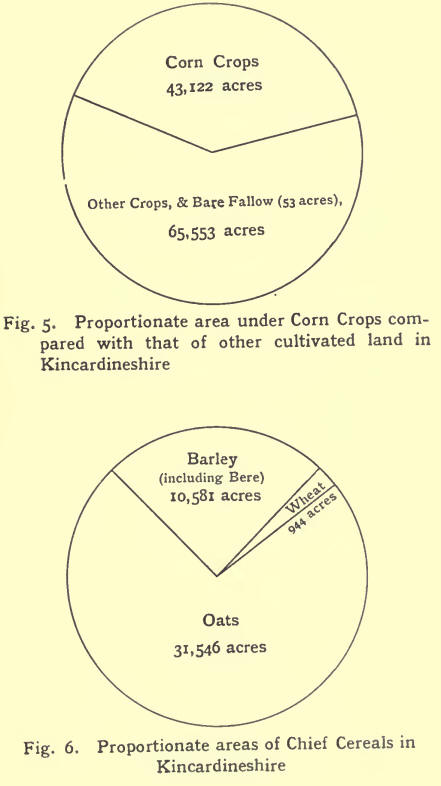
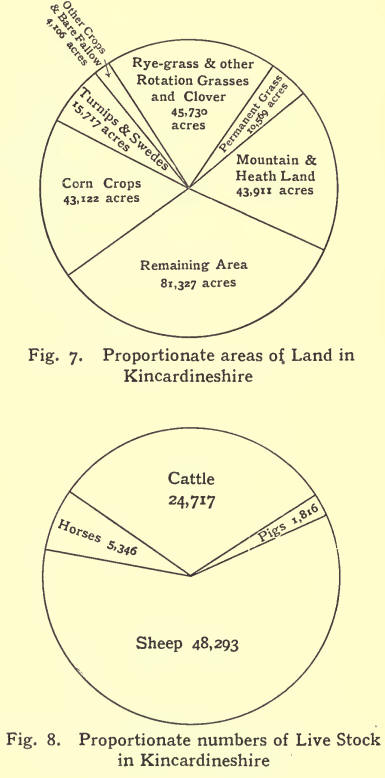
|

